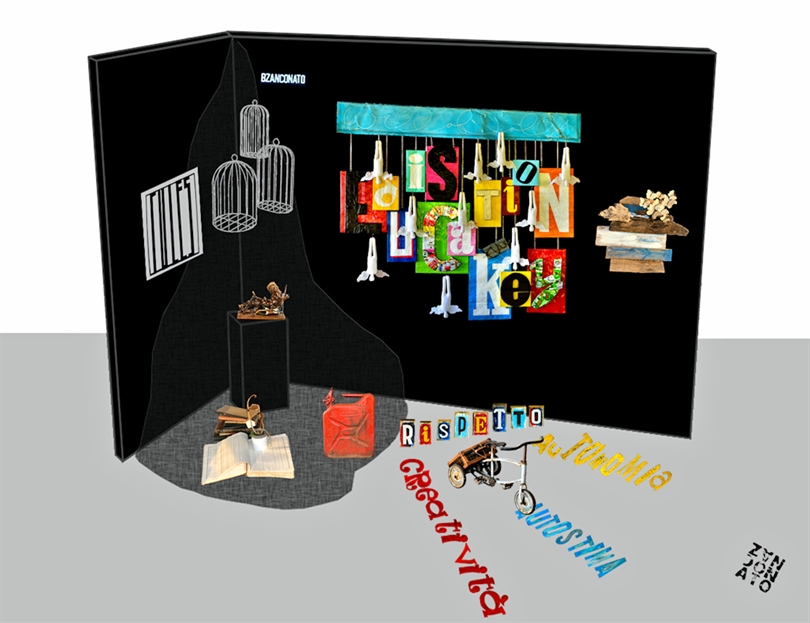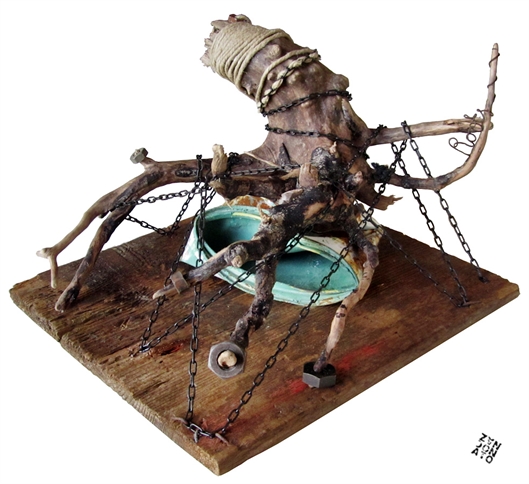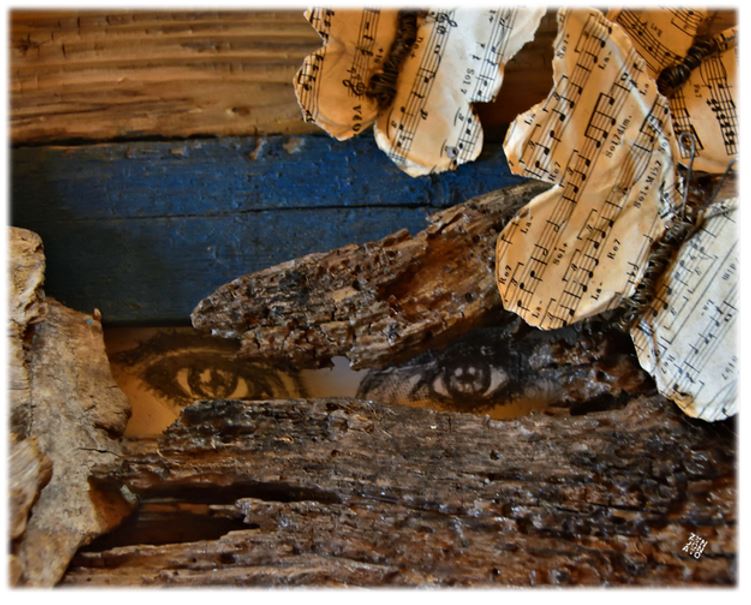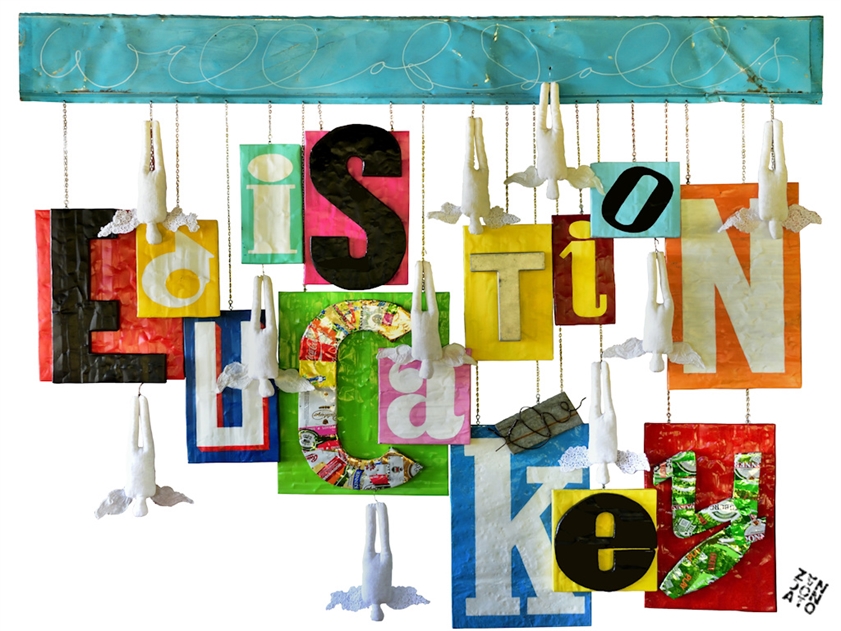My single line text
My single line text
My single line text

ALETHEIA: IL PROFUMO DELLA LIBERTA'
(Unveiling: scent of freedom)
project of site specific installation for ARTELAGUNA PRIZE 2019-2020

Recent news show the tragic theme of violence against women, which often culminates in feminicides.
Politics and society are trying to face this issue with new educational projects to ensure that gender respect is taught and promoted in schools. Statistics show, however, that the subject remains highly topical even in the more advanced societies of northern Europe where education systems are considered the best in the world.
This is the subject of the installation entitled ALETHEIA: IL PROFUMO DELLA LIBERTA’ (Unveiling: scent of freedom) which proposes a multi-level reflection on the theme of female oppression and the state of the gender relationship.
As in a tale that is articulated through different chapters, here the narration pass through the four main components of the whole installation, starting from the small sculpture (ROOTS) placed in the left part of the project, to pass, through the other sculptures – RULES and MOKHSA – to the central artwork (WALL OF DOLLS) which proposes the question: is education the key?
Politics and society are trying to face this issue with new educational projects to ensure that gender respect is taught and promoted in schools. Statistics show, however, that the subject remains highly topical even in the more advanced societies of northern Europe where education systems are considered the best in the world.
This is the subject of the installation entitled ALETHEIA: IL PROFUMO DELLA LIBERTA’ (Unveiling: scent of freedom) which proposes a multi-level reflection on the theme of female oppression and the state of the gender relationship.
As in a tale that is articulated through different chapters, here the narration pass through the four main components of the whole installation, starting from the small sculpture (ROOTS) placed in the left part of the project, to pass, through the other sculptures – RULES and MOKHSA – to the central artwork (WALL OF DOLLS) which proposes the question: is education the key?

Roots and cultural rules, to which we are all subject, constitute the fundamental background from which oppression and violence draw sap. This is the subject of ROOTS in which a vice of tentacular roots crush an empty tin, symbol of an essence that has yet to form. Roots, traditions, habits are nothing but ways to try to give a romantic and positive meaning to the attempt to maintain and consolidate over time, archaic and now anachronistic positions, which underlie a need for personal control.
This inevitably touches on some taboo themes such as those of the family, of the role of women (and men) within the family and in society, of the education of the new generations, in which we can see the permanence of a basic mentality in which the traditional gender roles reveal a male dominance over the female part (which is still seen as a property of which the male can dispose at will).
This inevitably touches on some taboo themes such as those of the family, of the role of women (and men) within the family and in society, of the education of the new generations, in which we can see the permanence of a basic mentality in which the traditional gender roles reveal a male dominance over the female part (which is still seen as a property of which the male can dispose at will).

Obviously, roots are indissolubly linked to family and social rules (RULES, the title of the second sculpture) that have become fossilized and that, like traditions, tend to perpetuate themselves over time.
Ethics, education, roles have always been and still are, in fact, different depending on the gender of the people.
Each of us, as soon as we are born, is routed towards a vision of the world in which gender has an absolute value.
Just look at the colors that surround infants to realize how subtly present is this vision that begins with the very birth of the new creature, but then continues with the next, similarly sneaky, teaching/setting rules – it is not clear who established them -
and that are different depending on sex.
In the light of contemporary life, now this “gender vision” is however outdated: the supremacy of male, in a time when physical strength is no longer a relevant factor, as well as the conception of the possession of women by the man, at a time when the feminine and sexual liberation should be obvious, appear no longer acceptable concepts.
And this is something that, often too late, realize women who are victims of violence
and who cannot get out of the cage in which, at a certain point, without seeing it, they found themselves.
Ethics, education, roles have always been and still are, in fact, different depending on the gender of the people.
Each of us, as soon as we are born, is routed towards a vision of the world in which gender has an absolute value.
Just look at the colors that surround infants to realize how subtly present is this vision that begins with the very birth of the new creature, but then continues with the next, similarly sneaky, teaching/setting rules – it is not clear who established them -
and that are different depending on sex.
In the light of contemporary life, now this “gender vision” is however outdated: the supremacy of male, in a time when physical strength is no longer a relevant factor, as well as the conception of the possession of women by the man, at a time when the feminine and sexual liberation should be obvious, appear no longer acceptable concepts.
And this is something that, often too late, realize women who are victims of violence
and who cannot get out of the cage in which, at a certain point, without seeing it, they found themselves.

MOKHSA is the representation of this contradiction: on the one hand the cage that woman, in everyday life, perceive, in the insecurity generated by the contrast between the education received, that relegates her to a role of subjugation and submission to her man, and, on the other hand, the evidence that proves that a woman is no less than a man, in any area of life.
At the same time, the work emphasizes that the concept of “possession” of a person is a particularly absurd thing: material things and bodies may be objects of possession but certainly not a person, that besides a body also possesses a soul.
You can keep a person segregated, isolated from the world as in a prison, but that does not imply possession. And the sight that emerges from the wooden barrier in the artwork is a proud testimony of that, as well as the butterflies that can be seen as a symbol of a free spirit that will always be indomitable: in the end, you can never cage a soul.
At the same time, the work emphasizes that the concept of “possession” of a person is a particularly absurd thing: material things and bodies may be objects of possession but certainly not a person, that besides a body also possesses a soul.
You can keep a person segregated, isolated from the world as in a prison, but that does not imply possession. And the sight that emerges from the wooden barrier in the artwork is a proud testimony of that, as well as the butterflies that can be seen as a symbol of a free spirit that will always be indomitable: in the end, you can never cage a soul.

The central artwork (WALL OF DOLLS) therefore poses the big question: is education the key? Is it sufficient to teach people, children, that one should not go so far as to engage in violent acts in order to solve the issue, when then the reference behavioural models, the so-called examples, that children have under their eyes every day contradict the words of educators?
And unfortunately, the victims are not only women, who have been routed since childhood, more or less consciously, to a role of submission, but also their male peers, in their turn educated to a role of dominance that leaves little room for fragility,
seen as an aspect of weakness to be denied (precisely in this regard the winged figures placed upside down
in the artwork have no references and symbols of sexual identification).
And unfortunately, the victims are not only women, who have been routed since childhood, more or less consciously, to a role of submission, but also their male peers, in their turn educated to a role of dominance that leaves little room for fragility,
seen as an aspect of weakness to be denied (precisely in this regard the winged figures placed upside down
in the artwork have no references and symbols of sexual identification).

The solution?
Difficult to say but certainly a first step could be to abandon this “gender vision” in favor of that of human being.
From the educational point of view, then, it would be a matter of passing the fundamental principle of well-being as a fundamental right of the person, cultivating concepts such as self-esteem, autonomy and creativity
in a continuous and difficult search for a balance between self-respect and that of others.
If we learned to consider gender differences as somatic differences such as eye or hair color, we would free ourselves,
once and for all, of a world divided between a female and a male hemisphere.
To speak, with a unifying term, of persons and not of males and females, implicitly,
would wipe out differences and consequently also the same gender vision.
To come back to the question posed by the artwork, certainly this also refers to a concept of education, but even earlier it refers to a reflection on the general vision of things and to a paradigm shift that contemporary society seems to need.
This would be a first, fundamental starting point on which to build new ethical, behavioural and educational bases.
Difficult to say but certainly a first step could be to abandon this “gender vision” in favor of that of human being.
From the educational point of view, then, it would be a matter of passing the fundamental principle of well-being as a fundamental right of the person, cultivating concepts such as self-esteem, autonomy and creativity
in a continuous and difficult search for a balance between self-respect and that of others.
If we learned to consider gender differences as somatic differences such as eye or hair color, we would free ourselves,
once and for all, of a world divided between a female and a male hemisphere.
To speak, with a unifying term, of persons and not of males and females, implicitly,
would wipe out differences and consequently also the same gender vision.
To come back to the question posed by the artwork, certainly this also refers to a concept of education, but even earlier it refers to a reflection on the general vision of things and to a paradigm shift that contemporary society seems to need.
This would be a first, fundamental starting point on which to build new ethical, behavioural and educational bases.